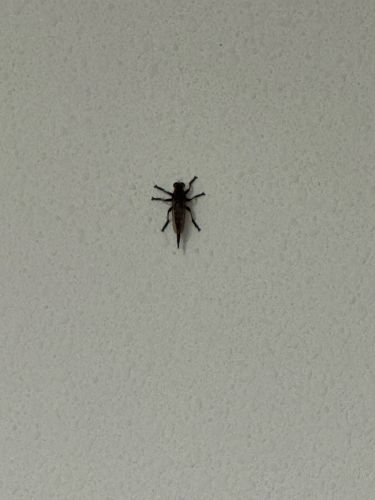Robber Fly
Scientific Name: Family Asilidae (various genera and species)
Order & Family: Diptera (True Flies), Family Asilidae
Size: Generally 0.5 to 3 cm (0.2 to 1.2 inches), depending on the species. Some tropical species can be larger.

Natural Habitat
Widely distributed globally, found in diverse habitats including grasslands, forests, deserts, and urban areas. They often perch on vegetation, rocks, or bare ground to ambush prey.
Diet & Feeding
Predatory. Both adult and larval robber flies are voracious predators. Adults feed on other insects, which they catch in flight, paralyze with their saliva (containing neurotoxins and enzymes), and then suck out the bodily fluids. Larvae typically live in soil or decaying wood and prey on other insect larvae, grubs, and pupae.
Behavior Patterns
Robber flies are known for their aggressive predatory behavior. They are agile fliers and are often seen ambushing prey from a perch. Their bodies are typically stout, often hairy, with strong, spiny legs for grasping prey. Many species mimic bees or wasps. Mating usually occurs in flight or on a perch, and females lay eggs in the soil, on plants, or in decaying wood.
Risks & Benefits
Benefits: They act as natural pest control, preying on various insects including some agricultural pests, mosquitoes, and other flies. Risks: While they do not generally pose a threat to humans, a robber fly may deliver a painful bite if mishandled or threatened. They are not venomous to humans in a medically significant way, but the bite can be irritating.
Identified on: 9/29/2025